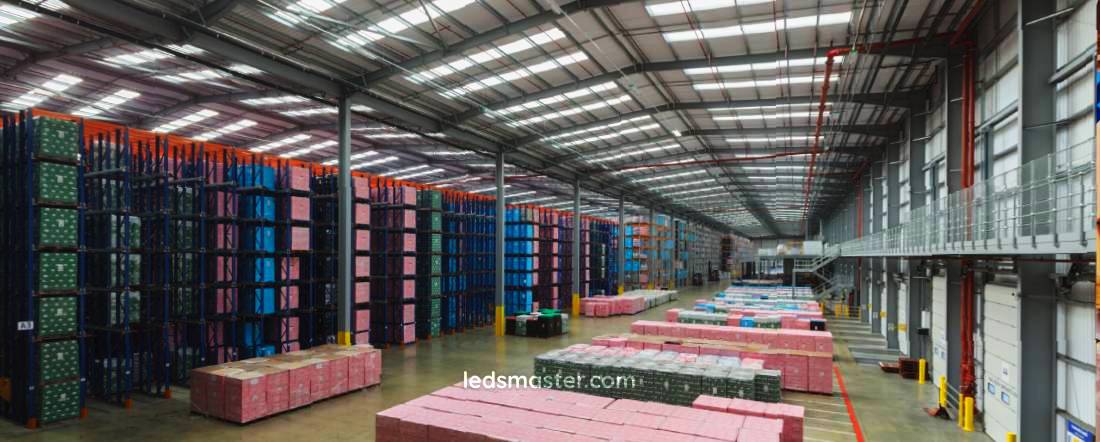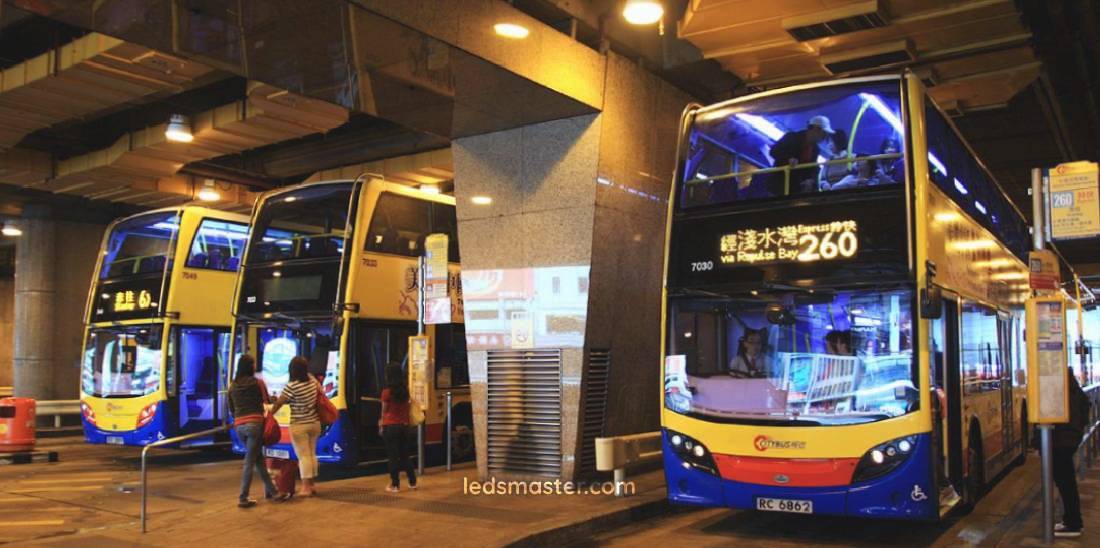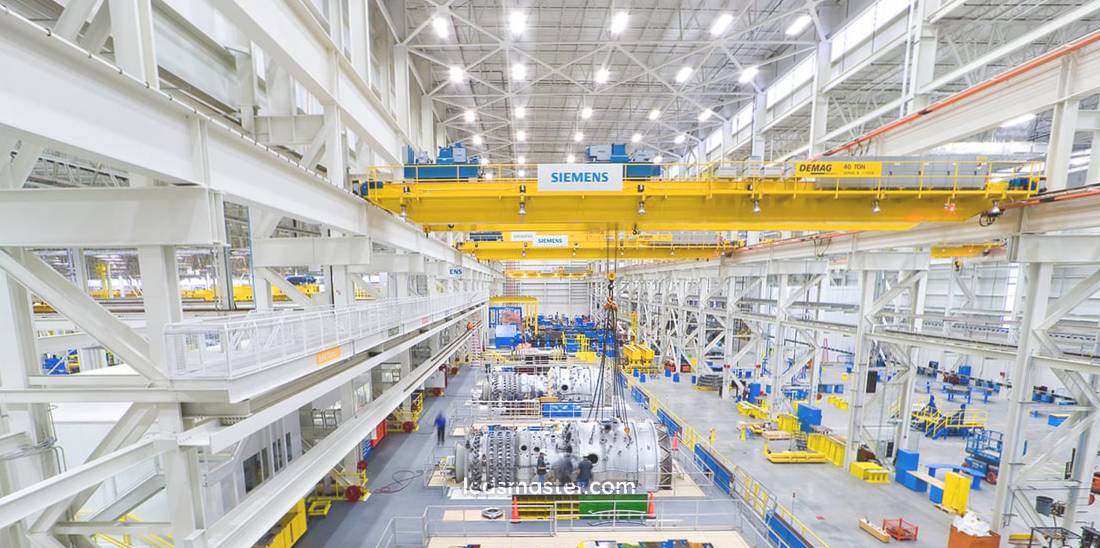High bay lighting stands as a cornerstone in the design of well-lit spaces with soaring ceilings, offering a blend of functionality and versatility. Found in diverse settings—from expansive warehouses and manufacturing facilities to recreational centers and retail environments—these fixtures provide robust illumination that enhances safety and productivity
Get your complimentary lighting design today
High bay lighting is specifically designed for these environments, providing adequate illumination for various applications, including warehouses, manufacturing facilities, gyms, and retail spaces. Designing high bay lighting involves multiple considerations, from understanding fixture types to optimizing placement for maximum efficiency.
Table of Contents
Toggle
When designing a high bay lighting system, the first consideration is the ceiling height. High bay lighting is typically applied in areas with ceilings ranging from 15 to 40 feet. The height of the ceiling directly influences the type of fixtures used and their placement. For example, fixtures must be mounted higher to avoid glare and ensure proper light distribution. Understanding the dimensions of the space allows for better calculations regarding the number of fixtures needed to achieve uniform light levels throughout the area.
The shape of the space also plays a role in the lighting design. Long and narrow spaces, such as corridors or assembly lines, may require different lighting strategies compared to large open areas. For instance, using row lighting or aligning fixtures parallel to work areas can help maintain even light distribution. Similarly, in wide areas, it might be necessary to stagger fixtures to cover the entire space effectively. Proper measurements and planning prevent dark spots and ensure that the lighting meets the tasks being performed.
Illuminance levels, often measured in lux, dictate how brightly a space needs to be lit based on its specific use. Different applications have varying lux requirements. For example, warehouses may only require around 150 lux, while manufacturing facilities might need up to 500 lux or more for assembly areas. Understanding these requirements allows for the selection of fixtures that can deliver the necessary light output.
Calculating the total lumen output needed is integral to high bay lighting design. Lumen output refers to the total amount of visible light emitted by a fixture. By multiplying the desired lux level by the area of the space (in square meters), the total lumen output can be determined. Once this figure is established, selecting the right number of fixtures becomes feasible, ensuring that the design meets the illumination needs without excess energy consumption.
Selecting the appropriate fixture type is a fundamental aspect of high bay lighting design. Different technologies are available, each with its advantages and limitations.

LED technology has gained immense popularity in recent years. These fixtures offer high lumen output, energy efficiency, and long lifespan, making them an appealing choice for high bay applications. The cool operation of LED fixtures reduces heat emissions, contributing to lower cooling costs in large spaces. Furthermore, LEDs provide various color temperatures, allowing for customization to enhance the ambiance and improve visibility. The ability to integrate smart controls with LED technology also enables features such as dimming and occupancy sensing, which can optimize energy use without compromising lighting quality.
Fluorescent lighting is another option commonly used in high bay settings. These fixtures provide good illumination and are often more cost-effective than LEDs. However, they have a shorter lifespan and require more frequent replacement. Fluorescent lights also consume more energy compared to their LED counterparts and may take time to reach full brightness after being turned on. While fluorescent fixtures can still be suitable for specific applications, the trend has shifted towards LED solutions due to their overall efficiency.
High-intensity discharge (HID) fixtures, including metal halide and high-pressure sodium lamps, were once the go-to choice for high bay lighting. While these lamps provide high lumen output, they have several drawbacks. They have longer warm-up times, generate significant heat, and require more maintenance due to their shorter lifespan. Additionally, the color rendering of HID lamps is not as favorable as LEDs, which can affect visibility in work environments. Although HID fixtures are still in use, the shift toward more efficient and versatile LED options continues to dominate the market.
Achieving uniform lighting is a primary goal in high bay lighting design. Uneven lighting can lead to visual discomfort, decreased productivity, and safety concerns. Understanding the distribution patterns of different fixtures is essential for creating an effective lighting layout.

The spacing of fixtures greatly impacts light distribution. For high bay areas, the general rule is to space fixtures at a distance of 1.5 to 2 times the mounting height. For example, if fixtures are mounted 20 feet high, they should be spaced approximately 15 to 20 feet apart. This spacing helps maintain uniformity and prevents shadows or dark areas from forming. Additionally, the angle of the fixtures plays a role in how light spreads across the space. Fixtures with adjustable mounting brackets allow for greater flexibility in directing light where it is needed most.
Reflectors and lenses can also enhance lighting distribution. Using fixtures with appropriate reflectors helps direct light downward and minimizes light loss. Lenses can soften the light and reduce glare, contributing to a more pleasant work environment. Considering these elements during the design phase can result in a well-lit space that meets the functional and aesthetic needs of the facility.
Ongoing maintenance is vital to sustaining the performance of high bay lighting systems. Regular inspection and upkeep prevent issues that could lead to decreased lighting levels or fixture failures. A well-planned maintenance routine can extend the lifespan of fixtures and maintain their efficiency.
Cleaning fixtures is a straightforward yet often neglected task. Dust and dirt can accumulate on fixtures over time, leading to reduced light output and increased energy consumption. Regularly scheduled cleaning not only maintains optimal brightness but also enhances the overall appearance of the space.
Additionally, monitoring systems can be implemented to track the performance of high bay lighting. These systems provide real-time data on energy consumption and lighting levels, allowing for proactive maintenance before problems arise. Regularly checking for flickering or dimming lights can identify when replacements are needed.
Establishing a consistent maintenance plan will enhance the longevity and reliability of the lighting system while ensuring that it continues to meet the needs of the facility.
Lighting design is not solely about functionality; it also plays a significant role in the aesthetics and ambiance of a space. High bay lighting can contribute to the overall look and feel of a facility, creating an environment that is inviting and productive.
The choice of fixtures, their finish, and the distribution of light can influence the atmosphere of an area. For example, using fixtures with a sleek, modern design can elevate the visual appeal of a retail space or showroom. Similarly, adjustable lighting systems allow for customization of brightness and color temperature, enabling different settings for various activities, such as presentations, events, or casual gatherings.
Implementing accent lighting in conjunction with high bay fixtures can also enhance the visual dynamics of a space. Highlighting specific areas, such as product displays in a store or artwork in a gallery, can draw attention and create an engaging atmosphere. This thoughtful integration of aesthetics and functionality fosters a space that is not only well-lit but also visually appealing.
As facilities become increasingly interconnected, integrating high bay lighting with other systems can yield additional benefits. Smart building technologies allow for seamless communication between lighting, HVAC, security, and energy management systems. This integration provides opportunities for enhanced energy efficiency and user control.
For example, linking lighting systems with occupancy sensors can automatically adjust illumination levels based on the presence or absence of individuals in the space. Such systems can reduce energy consumption and ensure that lights are only active when needed. Additionally, integrating lighting with building management systems can provide real-time data on energy use, allowing for informed decision-making and optimization of lighting schedules.
In environments where flexibility is required, such as multi-purpose venues, integrating high bay lighting with control systems can facilitate quick changes in lighting setups. This capability allows for quick adjustments during events or activities, ensuring that the lighting meets the needs of the moment.
High bay lighting design encompasses a broad spectrum of considerations, from understanding the unique needs of high-ceiling spaces to selecting the right fixtures and ensuring their effective installation and maintenance. By focusing on optimal lighting distribution, cost considerations, aesthetics, and integration with other systems, facilities can create well-lit environments that enhance productivity, safety, and visual appeal.
The evolution of lighting technologies offers many options for achieving these goals, with LED fixtures leading the charge in energy efficiency and versatility. Ultimately, the thoughtful design and implementation of high bay lighting can contribute to the overall success of a space, fostering an environment where both people and processes thrive.